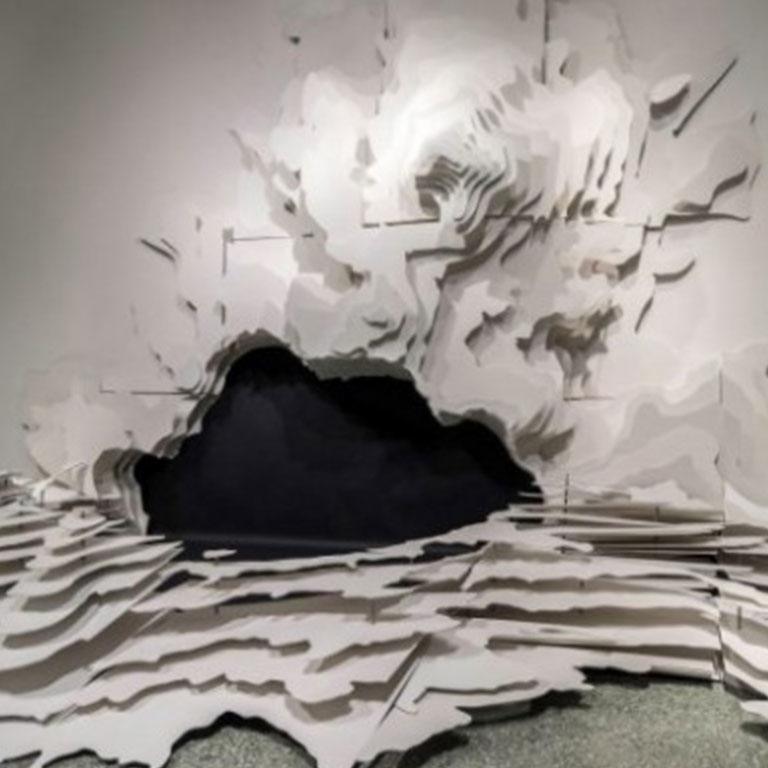Indiana University School of Fine Arts M.F.A. students utilize a wide variety of processes and technologies in the production of their work, one of these media being digital modeling and fabrication technology.
Digital modeling and fabrication technology allows the designer to transfer digital design to 3D objects through computer-controlled software. The digitally produced objects are created with a variety of CAD (computer-aided design) software that uses both 2D vector drawing and 3D modeling. Fabrication machines include CNC routers, laser cutters, and 3D printers.
This software is so versatile that graduate students in different studio art programs are bringing it into their normal studio practice. Tai Rogers (MFA Ceramics) discussed how he uses Rhinoceros 3D to design his sculptures and properly scale them to fit the installation space, as well as a CNC router that he uses after countless hours in the designing stage to precision cut the individual parts that are to be reassembled on-site. “IU has a very functional machine at McCalla School. There were several steps of software that translated my designs into commands that the machine could take and cut. This process took some practice, just like learning any new technology, but the shop coordinator, Vincent Edwards, was a great help and consultant.”
For Rogers, this is only the beginning of using CAD software. “I decided to work with the machine because I was planning for a very large sculpture, one that was possible to make by hand, but would have taken too long to complete in time for my current show. And now I’m realizing that this process has lots of future potential. All of the technology that I’ve utilized has become an extension of my hand-made skills into a realm of the virtual, taking ideas that may not have been created within the laws of physics and material limitations.”
Vincent Pontillo-Verrastro (MFA Metalsmithing and Jewelry Design) also utilizes this software in the production of his work. “I use digital modeling techniques as a way to sketch in three dimensions, create templates, and print three-dimensional forms used in the final work. The software I am most familiar with is Rhinoceros 3D and Kisslicer, and the 3D printer I use is a CubeX. The CubeX has been an excellent aid to my method of production, printing large-scale, lightweight, volumetric objects with PLA (Polylactic Acid). I began using this printer at home after purchasing one in July 2014, and after much trial and error have learned how to print a variety of objects using most of the capacity of this machine. I have since produced two bodies of art jewelry work mostly from this machine: analogue (.M Contemporary, Sydney AU), and my MFA Thesis Exhibition, Plume.”
Although a significant amount of Pontillo-Verrastro’s current studio research has involved 3D printing in some form, he discussed how technology is a tool and a great way to work in a less labor-intensive manner, but that his hand remains very involved in the creative process. “The work is never complete when it comes out of the printer. And I enjoy this process much more than if the printer completed my work. I feel a deep sense of satisfaction when the printed object comes to the bench and I put my hand back in to the work.”
Both Rogers and Pontillo-Verrastro expressed their enjoyment in using this technology and recognize it as an important component of their studio practices. “My work is served by the possibilities the technology offers, and continues to be inspired by new opportunities to realize projects,” explained Rogers. Pontillo-Verrastro talked about the use of this software as tactile and exciting. “It has been the most challenging, frustrating, and satisfying experience in attempting to understand how the printer is going to want to print, how it can print an object in the most successful way possible, and understanding this new material and its application to my studio practice. I like to think that I explore the world through my hands, and if technology is applicable at the time then I can navigate this exploration through the printer.”


